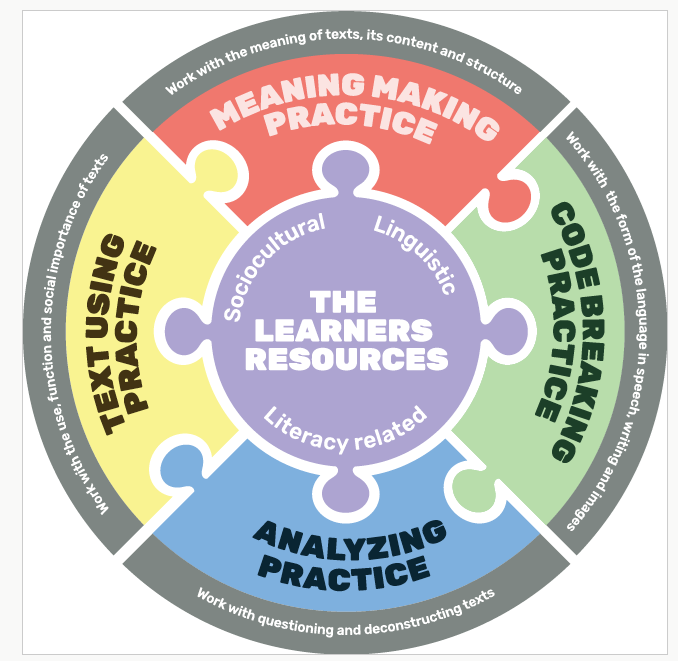Our pedagogy
Our pedagogy
We use the Resource Model as the theoretical and didactic starting point for the development of our program.

The Resource Model is a pedagogical and didactic model that was presented by Franker (2016). It was originally based on Freebody & Luke’s “The Four Resources Model” (1999) but has since been customised and supplemented with a clearer participant focus.
The model demonstrates how the resources that the individual already possesses can be used as a starting point for the practical work and influence the development across the four different literacy practices.
The work described in the Resource Model is consistently based on the individual’s linguistic, literacy-related and socio-cultural resources. These resources are always the premise for how the teaching is configured. By working in a theoretical and practical way across four different literacy practices, as well as on code-breaking skills, we develop the participant’s understanding and analysis of texts, their use of texts and their own text creation. Once these varied focuses are integrated into the daily work, it will provide the participants with a directly practical literacy thereby ensuring a secure footing for further studies.
The different practices are integrated into the daily work but each one offers a special focus on a detail that is vital to understand in order to become literate. This could be focusing on the external form (on letters or images) as in the code-breaking practice or on a new text or image in order to decipher its message and why it has been formulated and written exactly as it is as in the meaning-making practice. It could also be recognising texts in school and in society through their appearance (e.g. a DNI (National Identity Document) or a recipe) and creating your own texts as in the text usage practice, or it could be actively asking yourself who might have written a certain text and why and to whom it is addressed (e.g. an election poster or an advertisement) but also creating your own texts with important messages in the analysing practice.

